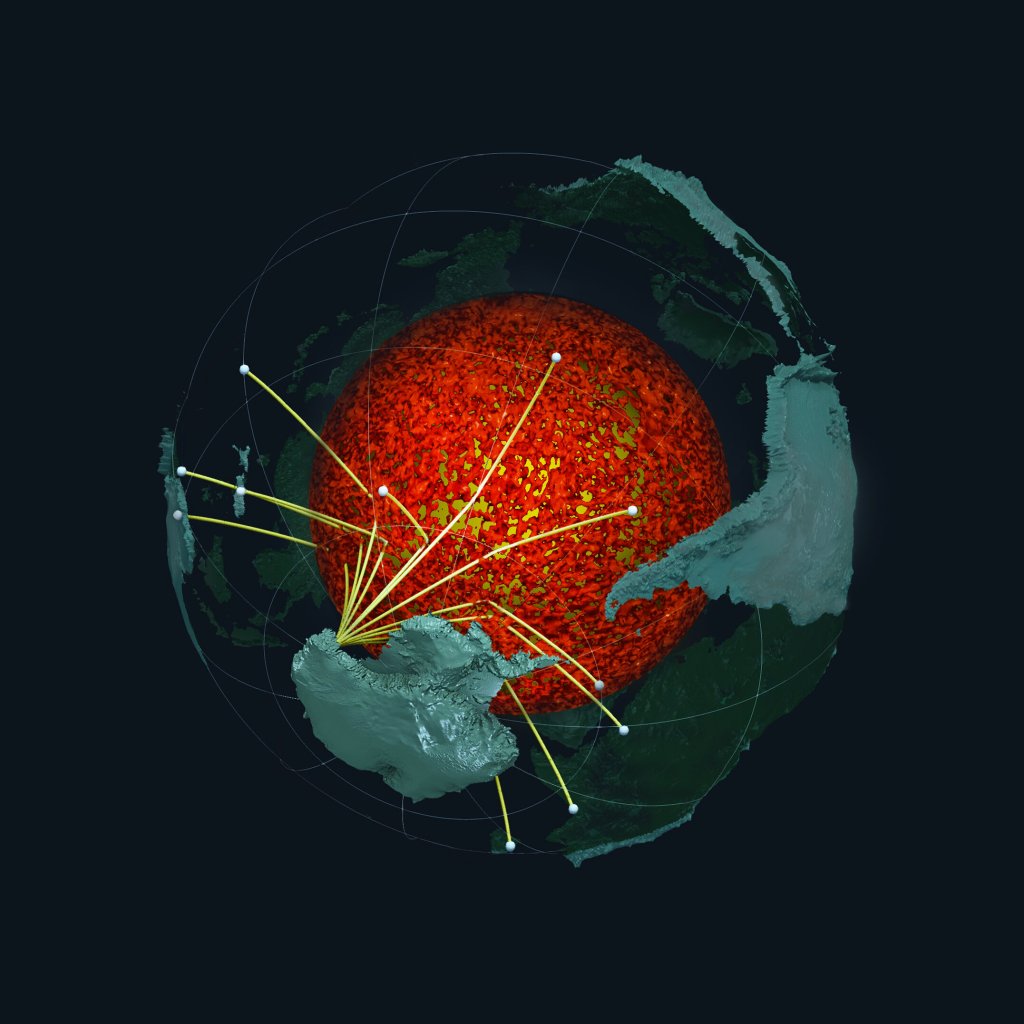Earth’s core is likely surrounded by the sunken remains of ancient seafloor, a discovery that reveals new details about this remote region that lies 1,800 miles under our feet, reports a new study. The results could help explain the origin of mysterious anomalies near the core that have puzzled scientists for years.
Earth’s core is far too deep to be directly explored, but scientists can peer into this realm using seismic waves generated by earthquakes. These waves slow down and speed up as they pass through various layers of our planet with different properties. Sensors located on Earth’s surface capture the waves, allowing researchers to peer into the interior of our world and observe key structures within it.
Videos by VICE
One of the weirdest parts of Earth is the boundary that marks the transition from the mantle, an expansive layer located under the thin planetary crust we all live on, and the core, the innermost part of our world. Scientists have detected strange structures in the core-mantle boundary that are known as ultra-low velocity zones (ULVZs) because seismic waves significantly decelerate as they pass through them. While many studies have observed ULVZs, the origin and extent of these underground anomalies remains unclear.
To shed light on these questions, scientists led by Samantha Hansen, a geophysicist at the University of Alabama, analyzed seismic data collected from Antarctica that exposed “widespread, variable ULVZs along the core-mantle boundary (CMB) beneath a largely unsampled portion of the Southern Hemisphere,” according to a study published on Wednesday in Science Advances.
The extensive presence of ULVZs at the core-mantle boundary suggests that these zones are ancient seafloors that were pushed into the mantle via subduction around 200 million years ago, a finding that is additionally supported by geodynamic models.
“The presence of ULVZs along the CMB is something that has been recognized in numerous prior studies, so we knew such structures are present in the lowermost mantle,” Hansen said in an email to Motherboard. “However, I think what was most surprising to me was how abundant these structures are. Even with the strict criteria we applied to define robust results, we found evidence for ULVZ all over the southern hemisphere.”
“Combining the seismic results with the geodynamic modeling took this a step further,” she added. “The consistency between them makes for a very compelling interpretation.”
Earth is a tectonically active planet, which means that its surface is covered with moving plates that sometimes bump into each other at regions called subduction zones. In these zones, one plate is pushed down under the other, causing it to enter the mantle. The new study suggests that parts of this subducted material may sink all the way down to the outer edge of the core-mantle boundary, where geophysical forces sculpt it into a kind of underground mountain range.
“The subducted material in the lowermost mantle is pushed around by convective flow, leading to variable accumulations (some thinner, some thicker),” Hansen said. “Given this, the material can be thought of as mountains with varied elevations. And, just like mountains at the surface of the Earth, this structure changes with time.”
Scientists have studied ULVZs for decades, but Hansen and her colleagues applied a unique dataset and a novel seismic analysis technique to their research. The Antarctic observations show that the ULVZs at the core-mantle boundary can be relatively thin, stretching for only a few miles in some areas, though these regions are very dense.
“Prior studies have found ULVZ evidence (at least in some locations) along the core-mantle boundary (CMB); however, the overall sampling of the lowermost mantle is quite sparse,” Hansen said. “Globally, only ~20% of the CMB has been examined for ULVZ structure, and coverage in the Southern Hemisphere is very limited.”
“Examining data from Antarctica helps us to fill in that gap,” she continued. “Further, given the lack of anthropogenic noise in Antarctica, the quality of the seismic data collected is very high, which is ideal for examining small amplitude signals, like those from ULVZs.”
In addition to understanding the origin of ULVZs, these precise observations may help explain the role that these regions might play in important geophysical processes. For example, Earth’s core powers our planet’s magnetic field, which is crucial for our survival because it blocks harmful solar radiation and stabilizes the atmosphere. However, it’s not at all clear how the core generates this field, and every small piece matters in solving that puzzle.
“The widespread ULVZ evidence we’ve found suggests that this anomalous structure may coat the CMB,” Hansen said. “The presence of such a layer could buffer heat flux across the CMB, which is important because the thermal conditions in this portion of the Earth have been shown to strongly impact the planet’s magnetic field.”
“ULVZ material can also potentially become entrained in upwelling mantle plumes, giving hotspots (like that beneath Hawaii) unique geochemical signatures,” she added. “Further, since mantle plumes are largely controlled by the thermal conditions near the CMB, the temperature influence of ULVZs may help dictate where plumes form.”
In other words, these anomalous zones that are hidden deep inside Earth may well influence our lives at the surface in countless ways. To pursue these questions, Hansen and her colleagues plan to examine ULVZs further using an expanded network of sensors in Antarctica, while also developing more complex geophysical models. These efforts may unravel the mysteries of these mountainous subterranean regions that may have once been at the bottom of the ocean during the age of dinosaurs.




